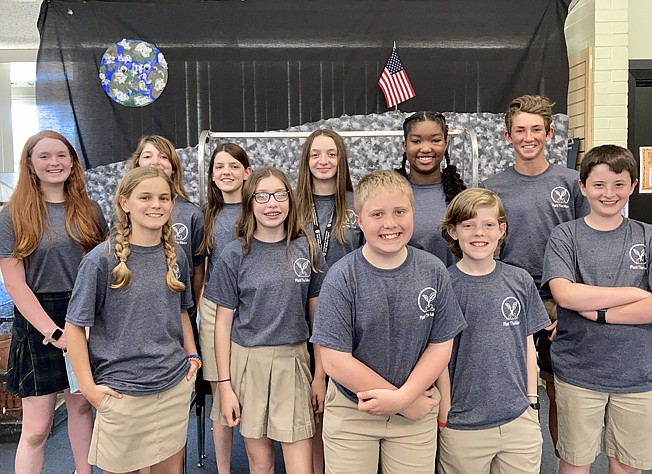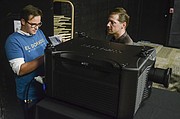TEXARKANA, Texas - A team of sixth- through eighth-grade students at St. James Day School participated in a global "Plant the Moon" challenge last week, testing their scientific creativity by simulating the growth of crops in Moon soil and winning a couple of awards in the process.
The students were challenged to grow crops in simulated lunar regolith, aka moon soil. The "Plant the Moon" challenge was hosted by The Institute of Competition Sciences in partnership with the University of Central Florida's CLASS Exolith Laboratory.
Each team designed and conducted a 10-week experiment and submitted a report to an advisory board that included NASA researchers and other experts in the field of astrobotany. NASA is looking for innovative ways to feed fresh, healthy food to astronauts on the upcoming Artemis missions to the Moon, with the ultimate goal of establishing sustainable colonies on the Moon and Mars.
"The goal was that the things different people figure out could be used to help future astronauts establish a moon colony one day," said Nicole Ayers, seventh and eighth grade math and science teacher and team coach. "It was definitely a unique experience. We do participate in some different science competitions, but this was a unique opportunity for us."
The challenge concluded with a virtual global summit where students learned more about the NASA Artemis mission. The summit concluded with a series of "Best in Show" awards, and St. James won two of the four awards for the Middle School division - recognized for the Evaluation of Results and Innovation categories.
"The kids were ecstatic," Ayers said.
"They worked really hard, and we knew that we had a very well-designed experiment. We were hoping to get experimental design or innovation awards because we tried to come up with something that was outside the box. I was very happy for them."
Ayers said the team engineered self-wicking pots to deliver water and nutrients to plants in a hybrid aquaponics system, which was donated by a Texas-based company called AquaSprouts. The students tested varying ratios of lunar regolith to aggregate clay pellets and also varied the type of aquaponics water.
They found positive results from mixing pellets with the moon soil and also created sample pellets that could be constructed on the surface of the Moon, minimizing the need to ship materials with rockets. Students also found that red wiggler worms were beneficial to plant growth, and that the worms were healthy as the population multiplied.
Ayers said the students are already looking forward to this summer's challenge: Plant Mars. With this challenge, they will shift their focus from the Moon to the fourth planet from the Sun and the second-smallest planet in the Solar System.
"They're opening it up where people can either try again to grow plants in Moon soil or simulated Mars soil. I asked (my students) if they wanted to do the Moon or Mars this time, and they're definitely interested in trying to work with Mars soil," Ayers said.
"We had a conference call at the beginning of the calendar year with a researcher in Europe who had good experience with growing things in Mars soil. So, we think we'll have a little bit more success," she said. "It's a little bit more like Earth's soil in its composition, not quite as harsh as the Moon soil."
(St. James Day School is located at 5501 N. State Line Ave.)



